How to Decide When a WISE Object is Resolved
Problem: Resolved sources are not measured properly within the WISE AllSky Catalog release,
notably because of the underlying assumption with the profile-fit photometry is that the PSF
is an adequate model of the light distribution for a source. REsolved sources (i.e.g, nearby galaxies)
do not follow the PSF, and hence require special photometric measurements. A key metric for
deciding whether a source is resolved is the profile-fit reduced chi^2. In general, for
w1rchi2 < 2, the source may be considered unresolved. Very slightly resolved sources (in W1)
have rchi2 values between 2 and 5, the profile-fit flux is generally adequate (if slightly underestimated).
Large chi^2, > 5,
indicate well resolved sources. But we have developed a more sensitive metric for separating
resolved (pointy) sources from resolved (fuzzy) sources. The method uses a special 2nd order moment, described below.
Method: Rfuzzy Parameter
The basic method is use the 2nd order intensity-weighted moment to describe the shape (major and minor axis)
of the object. The special trick, however, is to measure the moment for two separate pieces of the object --
where the object is divided along the *long* axis. If the object is symmetric and resolved on both sides
of the major axis (as with a normal galaxy), then each moment will has a resolved signature (i.e., large).
If the object is, for example, a double star, then one side is brighter than the other, the moments will
be different (one half will have a moment that is point-like, the other resolved). Thus, taking the minimum
moment value between the two halves, determines whether the source is resolved. Fuzzy objects will have
a large moment regardless of which major axis half that is measured; stars or double stars will have a
minimum moment that appears to be unresolved.
Algorithm:
1. Rotate Axis to determine optimum 2nd moment parameters (Rmajor, Rminor, position angle of long axis)
2. divide the long axis into two halves: positive x, and negative x, where the
central x position is the nominal position of the source
3. compute 2nd order moment for each half, derive the Rmajor for each half: Rmajor_1, Rmajor_2
4. Rfuzzy = min (Rmajor_1, Rmajor_2).
5. if Rfuzzy < Rfuzzy_limit, then the source is unresolved.
The typical value for Rfuzzy is ~10.0 arcsec for point sources, depending on the S/N. The spread in values is
presented below; Rfuzzy_limit is based on this spread.
Sample Measurements: Point Sources
In order to investigate the properties of the Rfuzzy parameter for point sources,
the sample presented below, drawn from the south galactic pole region, was selected to be point sources
by demanding that w1rchi2 < 3.
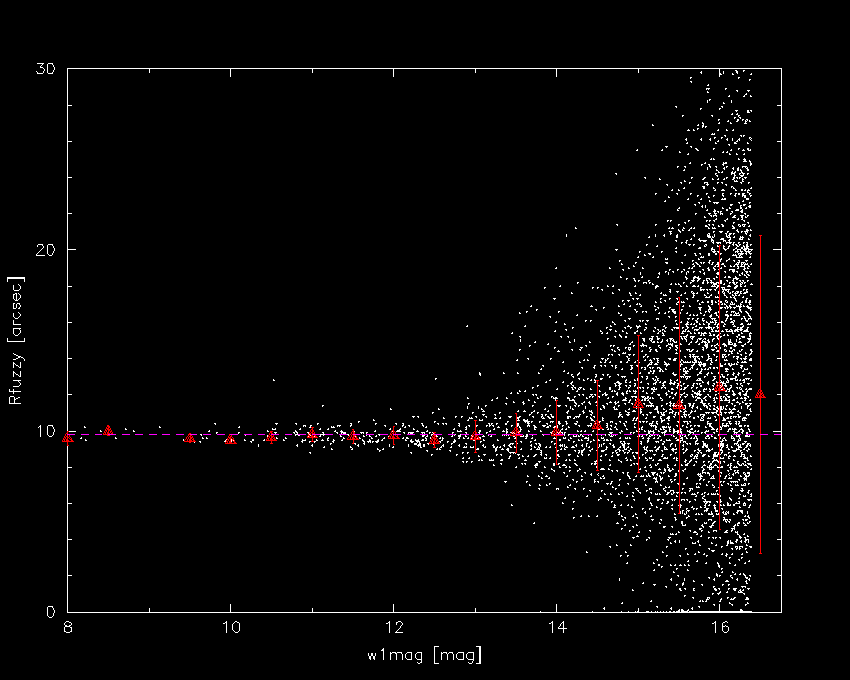
W1 mag versus the Rfuzzy parameter |
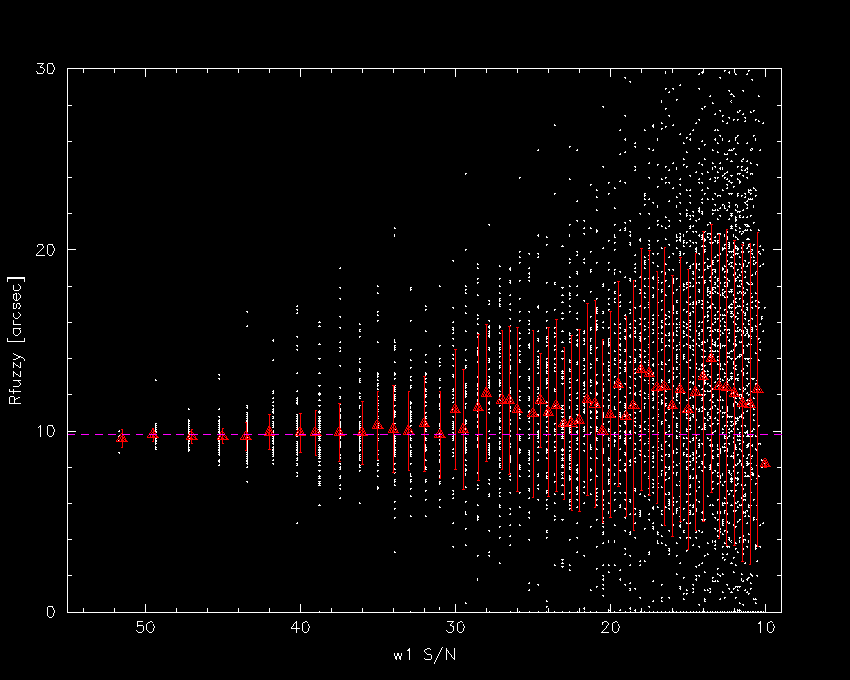
W1 SNR versus the Rfuzzy parameter |
Using the mean and RMS of Rfuzzy values, we define the upper limits by setting them to
2*sigma above the mean Rfuzzy values for each bin (either w1mag or SNR). A power series is
then fit to the points to derive an analytic description of the Rfuzzy limit.
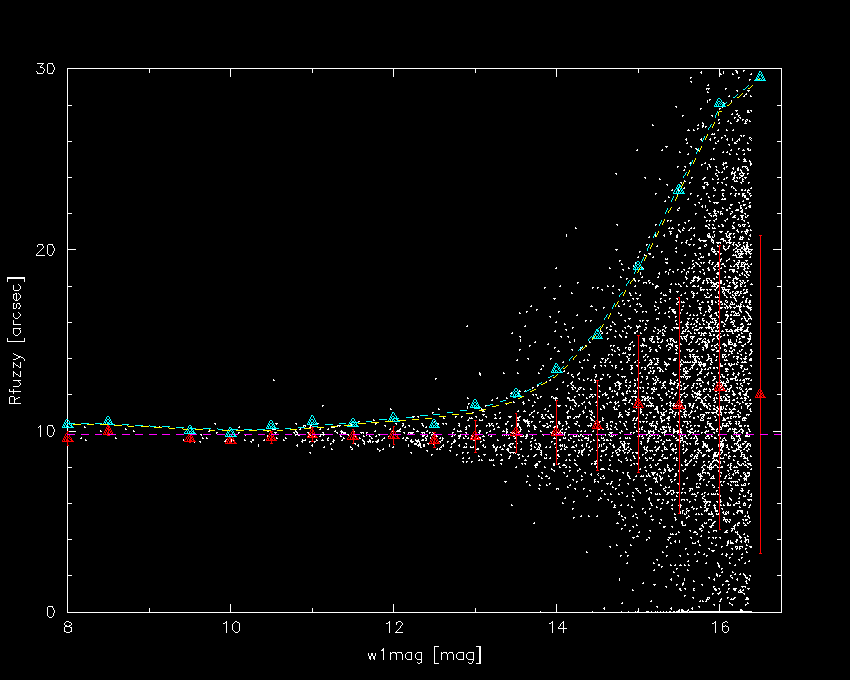
W1 mag versus the Rfuzzy parameter; cyan points are the 2-sigma limits (based on the red error bars); the yellow is a power-series fit |
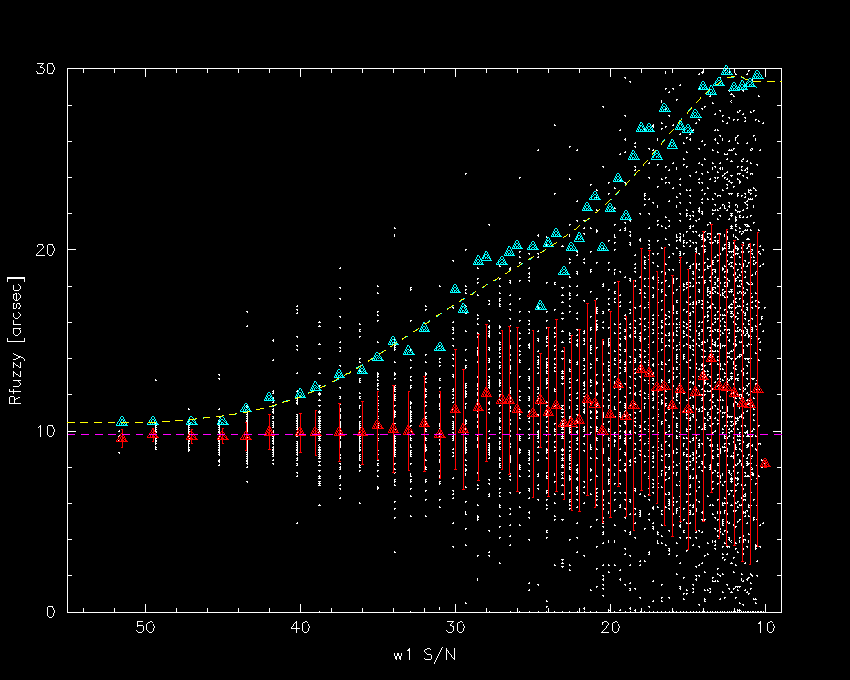
W1 SNR versus the Rfuzzy parameter; cyan points are the 2-sigma limits (based on the red error bars); the yellow is a power-series fit |
Resolved Sources
The following sample is drawn from 4 SGP tiles. The sources were targeted for processing due to their large w1rchi2 as follows: w1rchi2 > 3. Hence, these sources would normally be considered resolved. But inspection of the images, notably for some of the brightest sources, that some of the sources are point sources (bright stars, or multiple stars). The majority, however, are
resolved sources as the Rfuzzy parameter shows, below. The first set show the sources that are not 2MASS galaxies,
and the second set show 2MASS-Galaxy sources. The latter are clearly resolved (and are the brightest galaxies,
as expected).
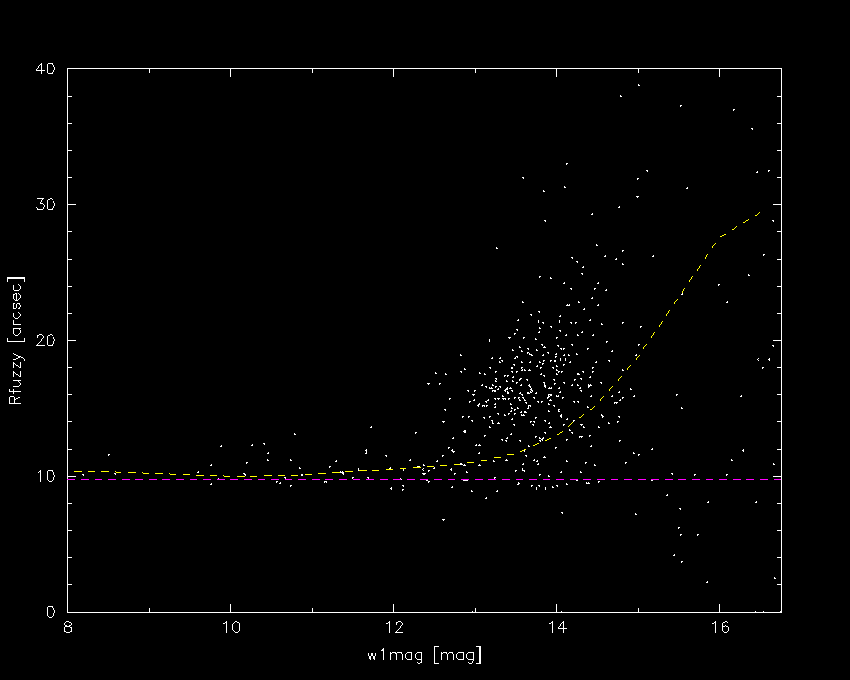
W1 mag versus the Rfuzzy parameter; these sources were chosen to be resolved -- the majority of which appear to
be; 2MASS galaxies have been *removed*; sources above the yellow line are considered resolved |
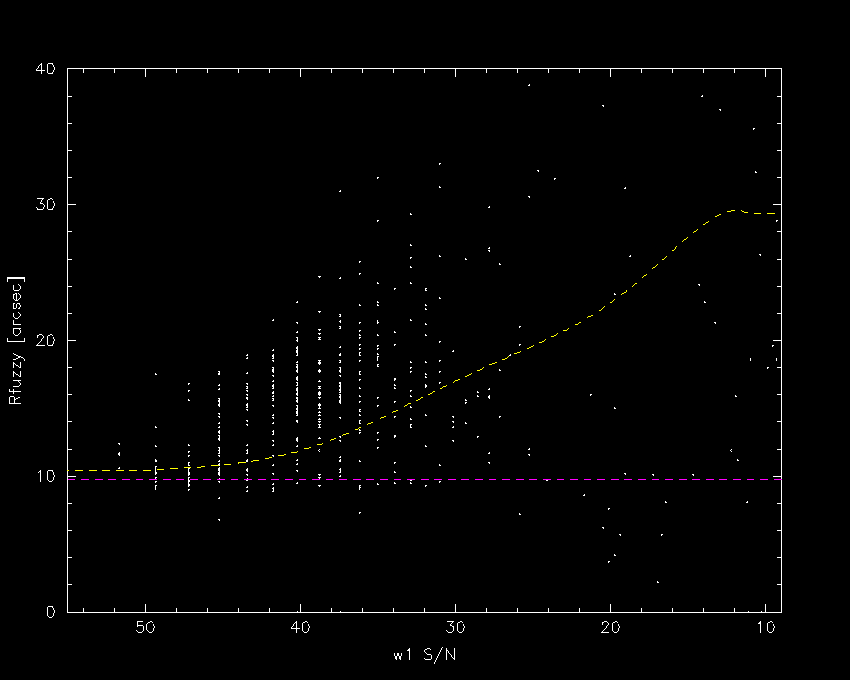
W1 SNR versus the Rfuzzy parameter; these sources were chosen to be resolved -- the majority of which appear to
be; 2MASS galaxies have been *removed*; sources above the yellow line are considered resolved |
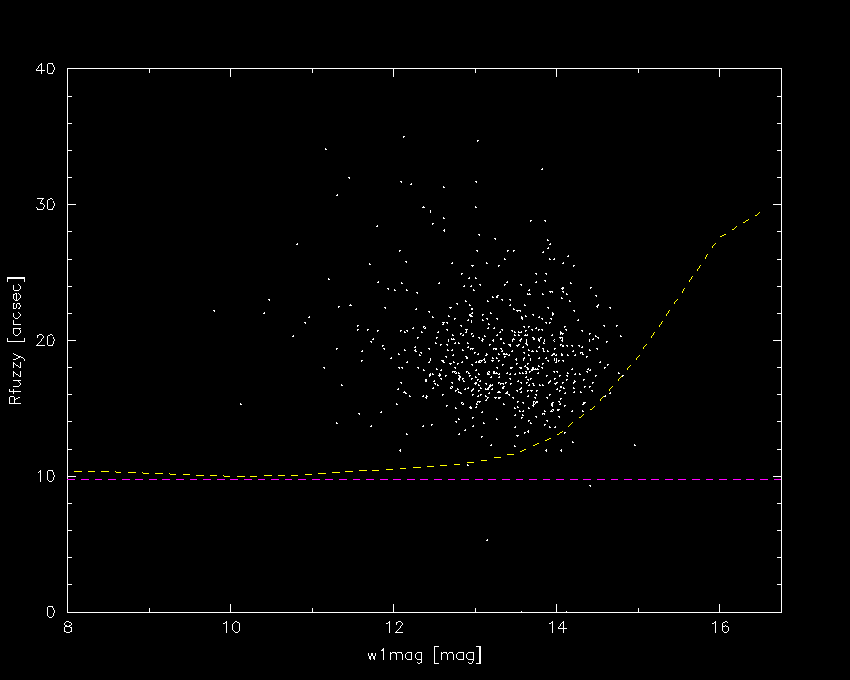
W1 mag versus the Rfuzzy parameter; 2MASS Galaxy-selected;
sources above the yellow line are considered resolved |
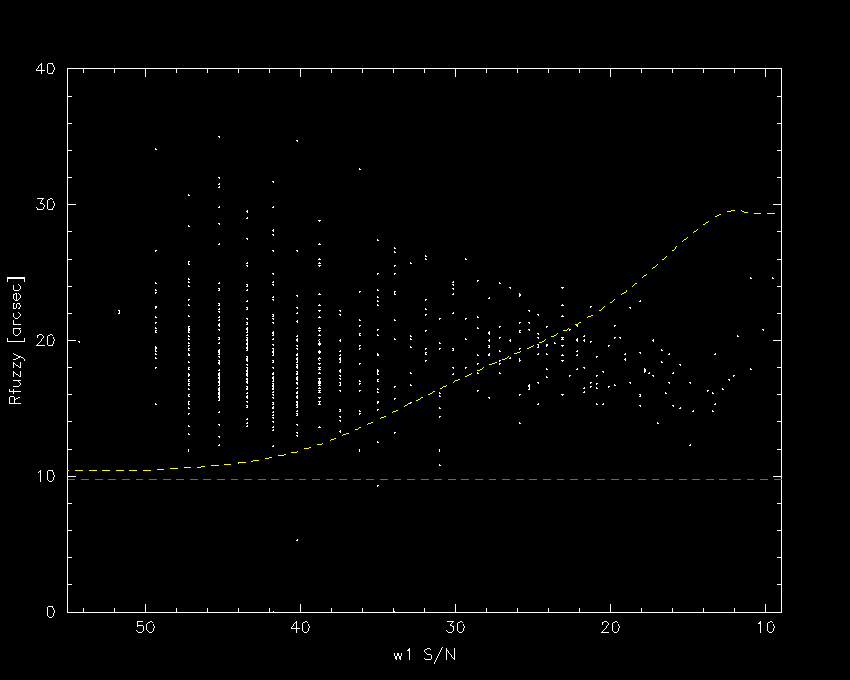
W1 SNR versus the Rfuzzy parameter; 2MASS Galaxy-selected;
sources above the yellow line are considered resolved |



